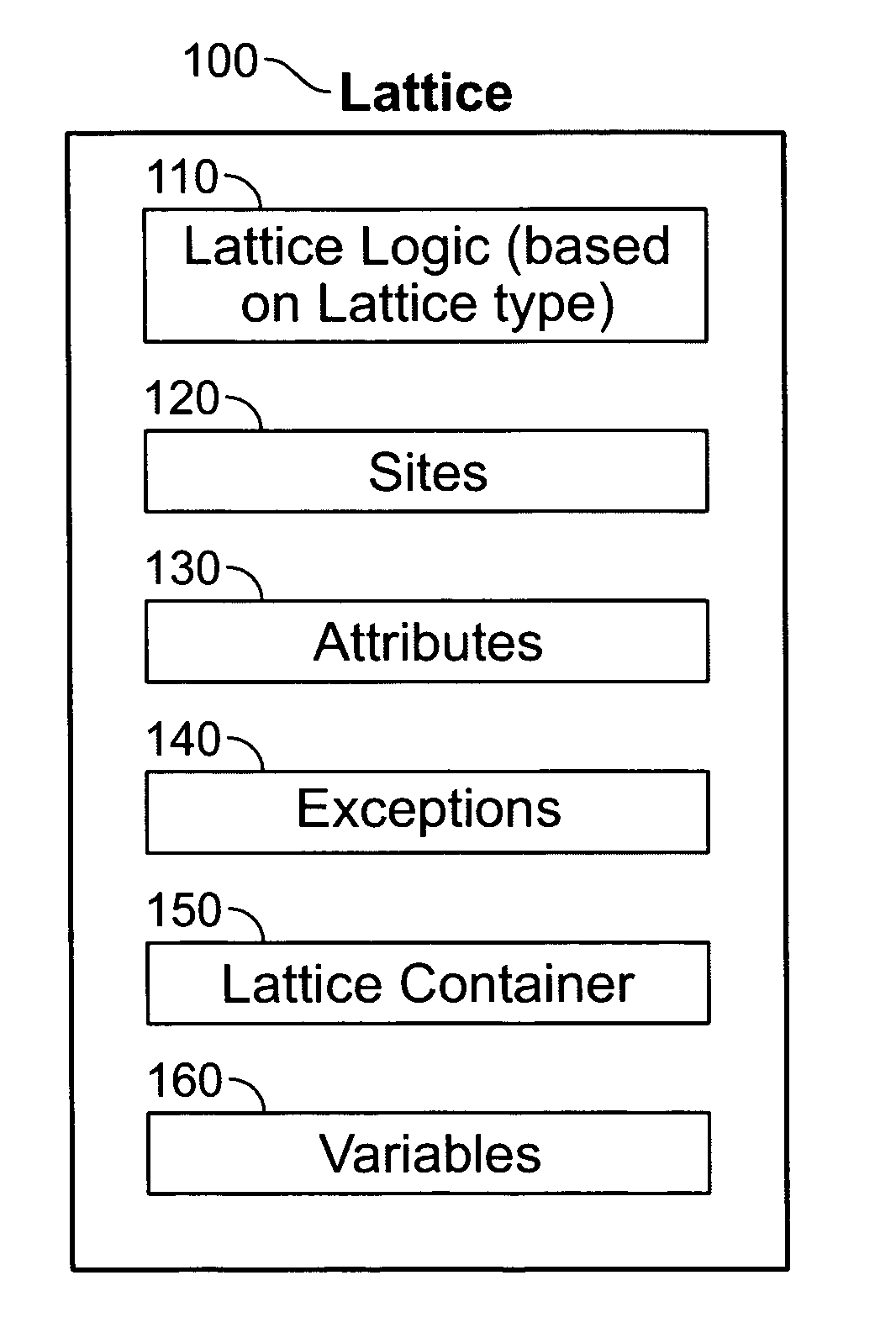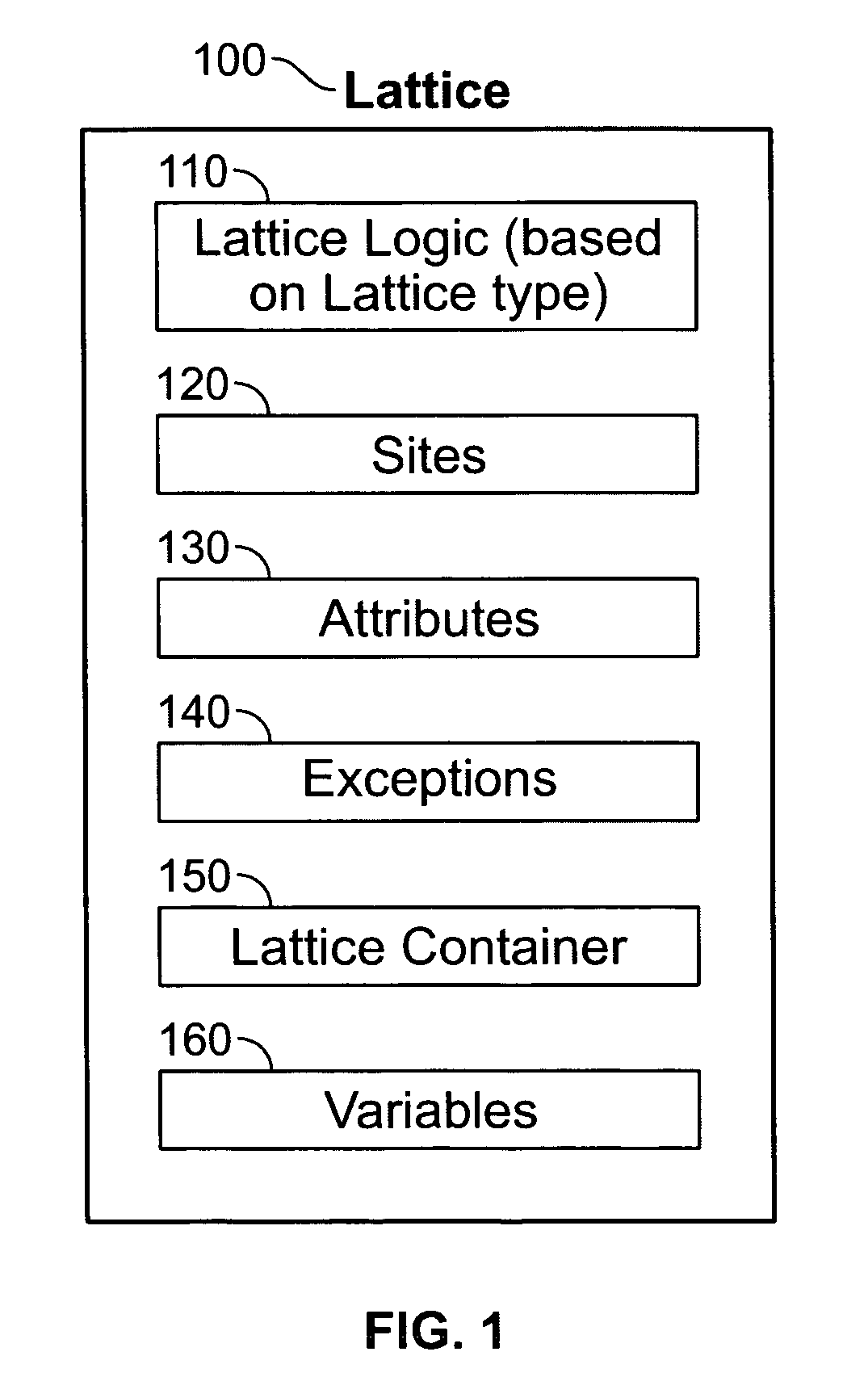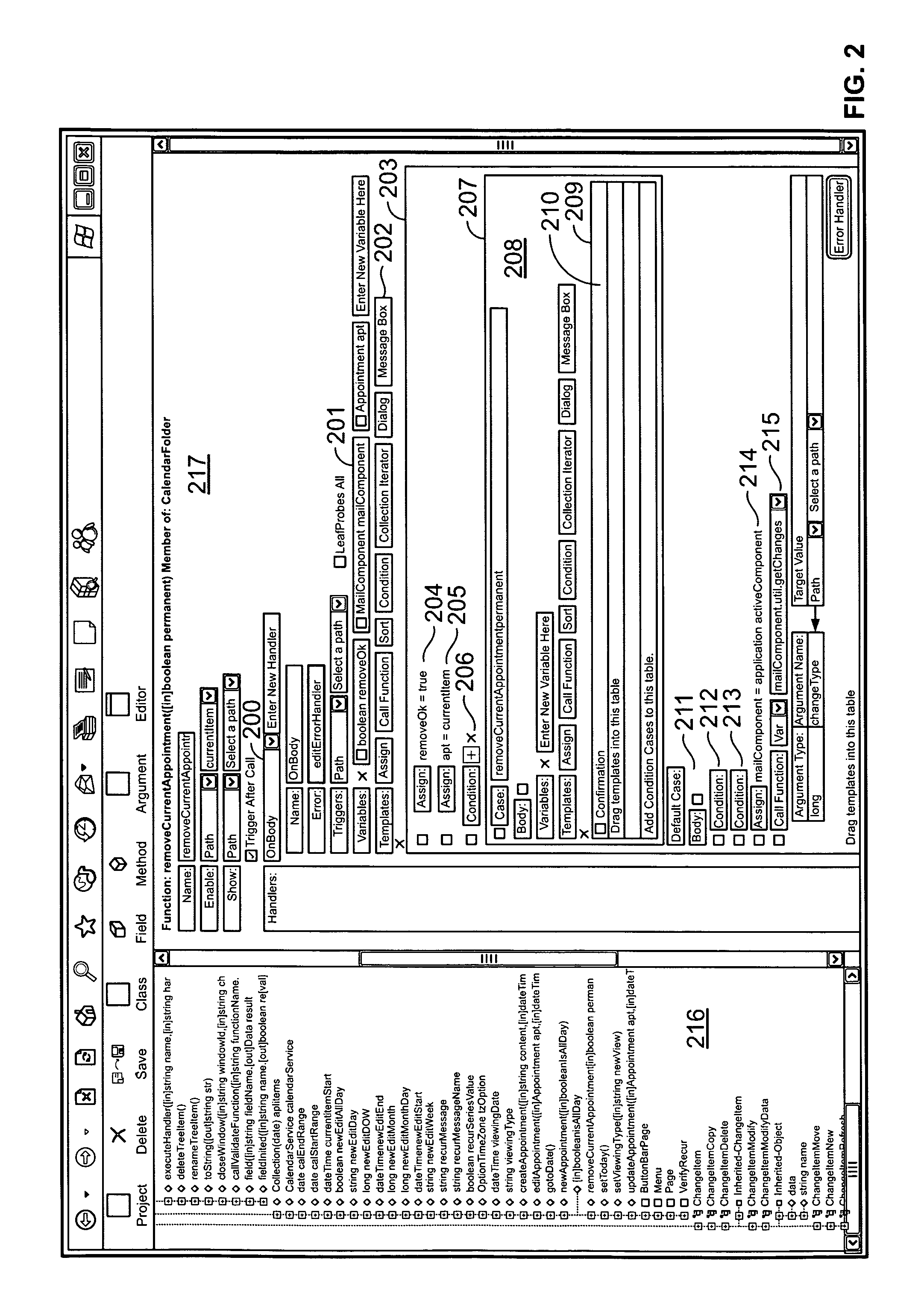Declarative computer programming language method and system
a computer programming and system technology, applied in computing, instruments, electric digital data processing, etc., can solve the problems of crippling the current solution to this seemingly intractable problem, poor user interface quality, and inability to define the programming language, so as to facilitate a very high level of abstraction
- Summary
- Abstract
- Description
- Claims
- Application Information
AI Technical Summary
Benefits of technology
Problems solved by technology
Method used
Image
Examples
Embodiment Construction
[0030]In the following description, numerous specific details are set forth in order to provide a thorough understanding of the present invention. It will be apparent to one skilled in the art, however, that the present invention may be practiced without these specific details. In other instances, well-known features have not been described in detail in order not to unnecessarily obscure the present invention.
[0031]The present invention describes a method and system of instructing a computer in a declarative computer programming language. The programming language of the present invention may be used to instruct a computer regarding business logic and entity behavior in such a manner that both may be expressed in terms of declarative language constructs. These constructs may be used to define functions and the interface rules for logic and entities. The degree of relationship orientation and flexibility in the programming system of the present invention may be greater than previous c...
PUM
 Login to View More
Login to View More Abstract
Description
Claims
Application Information
 Login to View More
Login to View More - R&D
- Intellectual Property
- Life Sciences
- Materials
- Tech Scout
- Unparalleled Data Quality
- Higher Quality Content
- 60% Fewer Hallucinations
Browse by: Latest US Patents, China's latest patents, Technical Efficacy Thesaurus, Application Domain, Technology Topic, Popular Technical Reports.
© 2025 PatSnap. All rights reserved.Legal|Privacy policy|Modern Slavery Act Transparency Statement|Sitemap|About US| Contact US: help@patsnap.com



